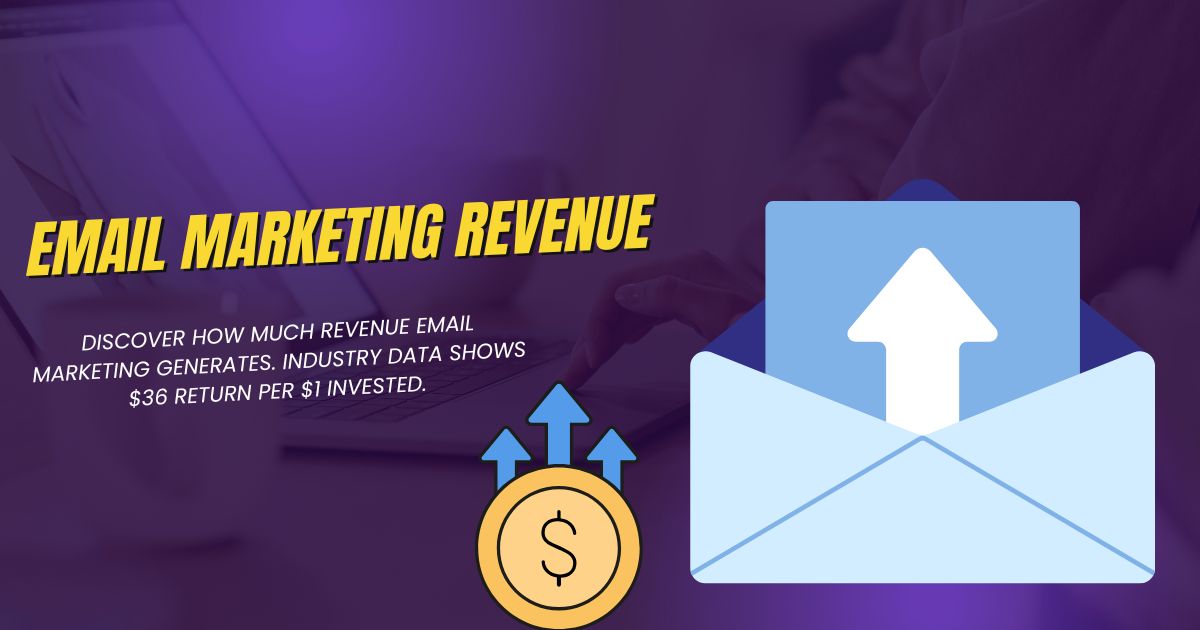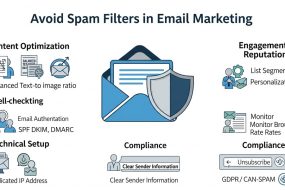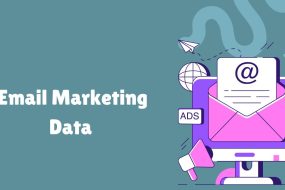
Email marketing continues to be one of the most profitable digital marketing channels available to businesses today. Despite predictions of its demise with the rise of social media and messaging apps, email marketing has not only survived but thrived, consistently delivering impressive returns on investment that far exceed other marketing strategies.
The revenue potential of email marketing is staggering. Industry reports consistently show that for every dollar invested in email marketing campaigns, businesses can expect substantial returns. This remarkable performance stems from email’s unique ability to reach customers directly in their inboxes, create personalized experiences, and drive immediate action through targeted messaging.
Understanding the true revenue potential of email marketing can transform how businesses approach their digital marketing strategies. The data reveals not just impressive overall returns but also shows how different industries, campaign types, and implementation strategies can dramatically impact revenue generation.
The $36 Return: Email Marketing’s Golden Ratio

The most frequently cited statistic in email marketing comes from the Data & Marketing Association, which found that email marketing generates an average return of $36 for every $1 spent. This translates to an astounding 3,600% return on investment, making email marketing one of the most cost-effective marketing channels available.
This impressive figure isn’t an outlier. Multiple studies have confirmed similar results, with some industries seeing even higher returns. The consistency of these findings across different research organizations and time periods demonstrates the reliability of email marketing as a revenue driver.
Several factors contribute to this exceptional ROI. Email marketing has relatively low costs compared to traditional advertising methods, allowing businesses to reach large audiences without significant upfront investments. Additionally, email campaigns can be highly targeted and personalized, leading to better engagement rates and higher conversion percentages.
Industry-Specific Revenue Performance
Different industries experience varying levels of success with email marketing revenue generation. Understanding these differences helps businesses set realistic expectations and optimize their strategies accordingly.
Retail and E-commerce
Retail businesses consistently report the highest email marketing returns, with some studies showing ROI figures exceeding $40 for every dollar spent. E-commerce companies particularly benefit from email marketing’s ability to showcase products, announce sales, and recover abandoned shopping carts.
Fashion retailers often see exceptional results from email campaigns, with personalized product recommendations and exclusive offers driving significant revenue. Seasonal campaigns and flash sales through email can generate substantial spikes in revenue, sometimes accounting for 20-30% of total online sales during peak periods.
B2B Services
Business-to-business companies typically see lower per-email revenue compared to retail, but often experience higher customer lifetime values. B2B email marketing campaigns focus more on nurturing long-term relationships and guiding prospects through extended sales cycles.
Professional services firms use email marketing to maintain consistent communication with clients and prospects, often generating revenue indirectly through relationship building and thought leadership positioning. While the immediate revenue per email may be lower, the long-term value can be substantial.
Hospitality and Travel
Hotels, restaurants, and travel companies leverage email marketing to drive bookings and repeat visits. These industries often see strong seasonal performance, with targeted campaigns generating significant revenue during peak travel periods.
Loyalty programs delivered through email have proven particularly effective in the hospitality sector, with personalized offers and exclusive perks driving repeat business and increasing customer lifetime value.
Campaign Types That Drive Revenue
Not all email campaigns generate equal revenue. Understanding which types of campaigns perform best helps businesses allocate their email marketing resources more effectively.
Promotional Campaigns
Sales announcements, discount offers, and limited-time promotions consistently generate the highest immediate revenue per email. These campaigns create urgency and provide clear incentives for recipients to make purchases.
Flash sales and exclusive member discounts often see open rates above 25% and conversion rates significantly higher than other campaign types. The key to success lies in balancing promotional frequency to maintain subscriber engagement without causing fatigue.
Automated Email Sequences
Welcome series, abandoned cart recovery, and post-purchase follow-up campaigns generate substantial revenue through automation. These campaigns work around the clock, nurturing leads and recovering potentially lost sales without ongoing manual effort.
Abandoned cart emails alone can recover 10-15% of lost sales, representing significant revenue recovery for e-commerce businesses. Multi-step sequences that combine educational content with gentle promotional messaging often outperform single promotional emails.
Newsletter Campaigns
Regular newsletters build long-term relationships and generate consistent, if modest, revenue over time. While individual newsletter emails may not drive massive immediate sales, they maintain brand awareness and keep businesses top-of-mind for future purchases.
Content-rich newsletters that provide genuine value tend to have higher engagement rates and generate more revenue through indirect conversions and improved customer loyalty.
Factors That Impact Email Marketing Revenue

Several key factors determine how much revenue email marketing campaigns will generate for any given business.
List Quality and Segmentation
High-quality email lists with engaged subscribers generate significantly more revenue than large lists with low engagement. Businesses that focus on building permission-based lists and regularly cleaning inactive subscribers typically see better revenue performance.
Advanced segmentation strategies can increase email revenue by 760% according to Campaign Monitor studies. Segmenting by demographics, purchase history, engagement level, and behavioral data allows for more targeted messaging that resonates with specific audience segments.
Personalization and Targeting
Personalized email campaigns generate 6 times higher transaction rates than generic broadcasts. Beyond simple name personalization, successful revenue-generating campaigns incorporate purchase history, browsing behavior, and preference data to create highly relevant messaging.
Dynamic content that changes based on recipient characteristics can significantly improve revenue performance. Product recommendations based on past purchases or browsing history often drive substantial additional sales.
Mobile Optimization
With over 60% of emails opened on mobile devices, mobile optimization directly impacts revenue generation. Emails that don’t display properly on smartphones and tablets miss significant revenue opportunities.
Mobile-optimized templates with clear calls-to-action, easily clickable buttons, and streamlined checkout processes can increase conversion rates by 15% or more compared to non-optimized campaigns.
Measuring and Maximizing Email Marketing Revenue
Tracking revenue from email marketing requires proper attribution and measurement systems. Most businesses use a combination of metrics to understand their email marketing revenue performance.
Key Revenue Metrics
Revenue per email (RPE) provides a clear measure of campaign effectiveness, calculated by dividing total campaign revenue by the number of emails delivered. Top-performing campaigns often achieve RPE figures of $0.50 or higher.
Customer lifetime value (CLV) attribution helps businesses understand the long-term revenue impact of email marketing beyond immediate conversions. Subscribers acquired through email often have higher CLV than those from other channels.
Conversion rate tracking reveals which campaigns and segments generate the most revenue per recipient. A/B testing different elements helps optimize for maximum revenue generation.
Revenue Optimization Strategies
Timing optimization can significantly impact email marketing revenue. Testing different send times and days of the week helps identify when target audiences are most likely to engage and make purchases.
Subject line optimization affects open rates, which directly correlates with revenue potential. Compelling, curiosity-driven subject lines often outperform generic promotional headlines.
Call-to-action optimization ensures that engaged readers convert into customers. Clear, prominent buttons with action-oriented text typically generate more clicks and revenue than subtle or unclear calls-to-action.
Start Maximizing Your Email Marketing Revenue Today
The evidence is clear: email marketing remains one of the most profitable digital marketing channels available. With proper strategy, implementation, and optimization, businesses across industries can achieve substantial revenue growth through email marketing campaigns.
Success requires focusing on building quality subscriber lists, creating valuable content, and continuously testing and optimizing campaigns. Start by auditing your current email marketing performance, identifying areas for improvement, and implementing the strategies that align with your business goals and target audience.
The potential for revenue generation through email marketing is substantial, but it requires consistent effort and strategic thinking. Begin with small tests, measure results carefully, and scale successful approaches to maximize your email marketing revenue potential.


















No Comments